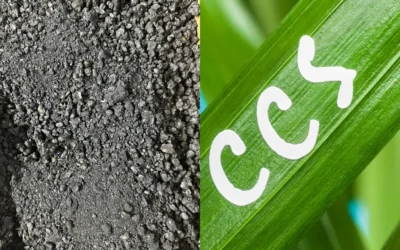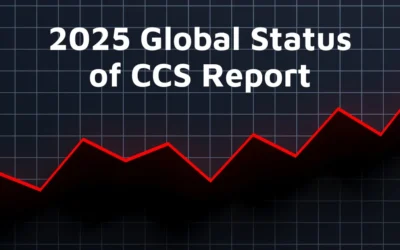As climate change intensifies, the need for effective strategies to reduce greenhouse gas (GHG) emissions becomes increasingly urgent. Carbon offset initiatives have emerged as crucial tools, enabling businesses, governments, and individuals to mitigate their carbon footprints by supporting projects that reduce or remove an equivalent amount of emissions elsewhere. This guide explores various types of carbon offset initiatives, highlights real-world examples, and examines the benefits and challenges associated with these efforts. It also introduces the innovative programs offered by Dynamic, a leading player in carbon offsets, and discusses their unique contributions to sustainable development.
What Are Carbon Offset Initiatives?
Carbon offset initiatives are projects designed to compensate for carbon dioxide (CO2) or other GHG emissions. These initiatives balance out emissions produced by activities such as industrial processes, transportation, and energy production, thereby mitigating their impact on climate change. Carbon offsets are quantified in metric tons of CO2-equivalent (CO2e) emissions reductions or removals.
Types of Carbon Offset Initiatives
Carbon offset initiatives encompass a wide range of activities, each targeting specific sources or sinks of GHGs. Here are some of the most common types:
1. Renewable Energy Projects: Generate electricity or heat from renewable sources, such as wind, solar, hydro, and geothermal power, displacing fossil fuel-based energy and reducing GHG emissions.
– Example: A wind farm in Tamil Nadu, India, generates clean electricity, replacing coal-fired power and reducing CO2 emissions.
2. Energy Efficiency Projects: Focus on reducing energy consumption by improving the efficiency of buildings, industrial processes, and transportation systems.
– Example: Upgrading machinery and lighting systems in a manufacturing plant to more efficient models reduces energy use and CO2 emissions.
3. Methane Capture Projects: Collect and utilize methane emissions from sources such as landfills, agricultural operations, and wastewater treatment facilities, preventing it from entering the atmosphere and often converting it into renewable energy.
– Example: A landfill gas-to-energy project in California captures methane emissions and converts them into electricity.
4. Biochar Production: Creates a stable form of carbon by heating organic material in the absence of oxygen (pyrolysis), sequestering carbon and improving soil fertility.
– Example: Converting crop residues into biochar in Michigan to sequester carbon and enhance soil health.
5. Clean Cookstove Projects: Distribute efficient stoves that reduce fuel consumption and emissions, improving air quality and health outcomes.
– Example: Providing rural households in Kenya with energy-efficient cookstoves that reduce wood and charcoal use, decreasing CO2 emissions and indoor air pollution.
6. Sustainable Agriculture: Promote practices that reduce emissions and enhance carbon sequestration in soils, such as no-till farming, cover cropping, and agroforestry.
– Example: Implementing no-till farming practices in the US Midwest to maintain soil structure, enhance carbon storage, and reduce emissions from agricultural machinery.
7. Industrial Gas Destruction: Capture and destroy potent greenhouse gases like hydrofluorocarbons (HFCs) and sulfur hexafluoride (SF6) from industrial processes.
– Example: An HFC-23 destruction project in China captures and destroys a byproduct of HCFC-22 production, preventing it from contributing to climate change.
Benefits of Carbon Offset Initiatives
Carbon offset initiatives offer a wide range of benefits beyond their primary goal of reducing GHG emissions:
– Environmental Impact: Mitigate climate change, conserve biodiversity, and protect ecosystems.
– Social and Economic Benefits: Improve health outcomes, create jobs, and support community development.
– Corporate Responsibility: Help businesses achieve sustainability goals and enhance their reputation among environmentally conscious consumers and investors.
Challenges of Carbon Offset Initiatives
Despite their benefits, carbon offset initiatives face several challenges that must be addressed to ensure their effectiveness and credibility:
– Additionality: Ensuring that emissions reductions are beyond what would have occurred without the project.
– Permanence: Maintaining long-term carbon sequestration.
– Verification: Independent third-party assessment to confirm the accuracy and legitimacy of emissions reductions.
Dynamic’s Carbon Offset Programs
Dynamic is at the forefront of developing and supporting innovative carbon offset initiatives. Here’s an overview of some of their key programs:
– Biochar Production with Proprietary Plant Technology: Dynamic’s proprietary plant captures carbon and converts it into biochar through pyrolysis. This biochar enhances soil fertility and provides permanent carbon sequestration.
– Example: A project in Michigan converts agricultural waste into biochar, which is applied to local farmlands, improving soil health and locking away carbon for centuries.
– Sustainable Agriculture: Promote practices that enhance soil carbon sequestration and reduce emissions.
– Example: Supporting no-till farming practices in the Midwest US to improve soil health and carbon storage.
Benefits of Dynamic’s Programs
– Environmental Impact: Significantly contribute to climate change mitigation, enhance biodiversity, and improve soil health.
– Social and Economic Benefits: Create jobs, improve health outcomes, and support community development.
Challenges and Considerations
Dynamic faces challenges such as ensuring additionality, maintaining permanence, and achieving rigorous verification to confirm the accuracy and legitimacy of their emissions reductions.
Conclusion
Carbon offset initiatives play a vital role in combating climate change by balancing emissions through various innovative projects. Companies like Dynamic lead the way with advanced biochar technology and impactful programs. Supporting these initiatives helps individuals, companies, and governments contribute to a more sustainable and resilient future.
Dynamic’s commitment to high-quality carbon offset projects underscores the importance of ensuring that such initiatives are credible, verifiable, and beneficial to both the environment and local communities. As the demand for credible carbon offsets grows, robust certification and verification processes remain essential for maintaining the integrity and effectiveness of these climate action tools.





